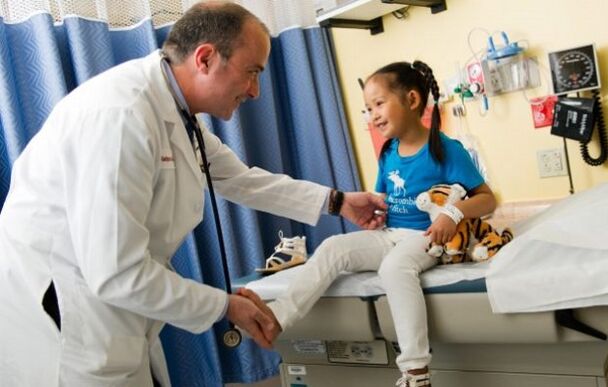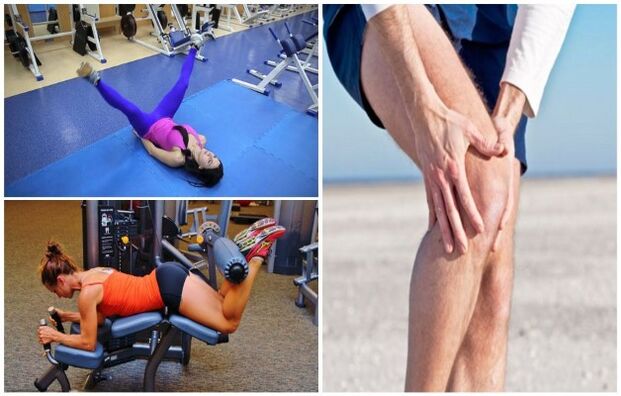Hip arthropathy is a disease of the musculoskeletal system, which is progressive and chronic in nature. The changes in malnutrition begin with cartilage tissue, which changes its structure, becoming loose, fibrotic, thinning and losing its amortization function. As a result, the bones and joints begin to rub against each other, lose their ability to move, and become painful. Without treatment, a person can become disabled.
Clinical manifestations and causes of arthropathy
Hip arthropathy is dominant in musculoskeletal diseases, mainly affecting adults after 35 years of age. In the medical classifier, he was assigned the M16 code according to MBK 10.
The hip joint is the largest joint in the human body and bears the greatest load. It connects the bones to the pelvis and has a spherical appearance. The round head of the femur is inserted into the acetabular notch. Its surface is covered with cartilage tissue, which enables bones to slide and perform shock absorption, protect bones from friction, damage, and provide a series of movements.
The mechanism of joint disease is simple:
- The amount of synovial fluid is reduced, so the joints are washed worse by it, and the supply of nutrients is reduced.
- The structure of the joint becomes loose. Due to friction, the cartilage becomes thinner and it no longer reduces the pressure on the bones.
- Growths (osteophytes) form along the edges of the bone.
- The joint space gradually decreases.
- The patient experiences severe pain, difficulty in movement, shortened limbs, and causes claudication.
There are many reasons for the occurrence of hip joint disease, but more often it is caused by a variety of unfavorable environments. The disease is divided into primary and secondary. In the first case, the doctor did not find the reason for the development of the disease, and in the second case, arthropathy occurred due to some pathology.

main reason:
- trauma;
- Electrical load, especially in the post-traumatic period when the joints have not recovered;
- overweight;
- Congenital abnormalities of the femoral head (dysplasia);
- Genetic
- Arthritis (joint inflammation);
- Prolonged stress
- Hormonal changes and diseases of the endocrine system;
- Infectious diseases.

Arthropathy can be unilateral, with damage to the right or left hip joint. When the pathological process affects both parties, it is more common to choose bilaterally.
Symptoms and extent of joint disease
The clinical of arthropathy directly depends on the stage of the disease. At first, people begin to feel slight discomfort from morning stiffness in the groin and legs, without swelling and swelling of the soft tissues. As the pathology develops, the acute phase begins, which is characterized by severe pain.
On the notes. When the first symptoms are found, you must consult a doctor and undergo an examination. Early disease responds well to treatment.
The main complaints of all patients were pain and restricted mobility. Their severity depends on the dystrophic changes in cartilage.
The disease has 3 degrees:
- At 1 degree, discomfort will only occur after prolonged physical exertion (climbing, running, cycling), and will disappear by itself after a rest. The muscles are in good condition and movement is not restricted. The joint space can be seen narrowing on X-rays.
- At 2 degrees, the pain begins to appear, the pain will appear in the groin area, and then spread to the buttocks and front of the thigh. "Starting" pain occurs when trying to get up or when you start to walk, and it disappears after 2-3 minutes. After prolonged fatigue, the soreness will increase and disappear during rest. One symptom of arthropathy is the characteristic tightening of the joints, restricted movement (hip abduction), decreased muscle strength, pain, and smooth muscle spasms. On the X-ray, you can see small osteophytes located on the edge of the joint bone area. The femoral neck is thickened and widened, and the joint space is significantly narrowed.
- In a third degree disease, the pain is permanent and does not go away even when resting. When walking, the patient uses temporary objects (canes, crutches). The musculature of the thighs and calves is atrophied, and the limbs are shortened-the patient is forced to stand on the fingertips in order to reach the ground. The X-ray image shows a large number of osteophytes, the femoral head is flattened, and the joint space is almost invisible.
Some doctors also distinguish the 4th degree of the disease. The joint is ossified and completely disabled on it, and a person cannot move without the help of crutches. The degree of joint disease is determined based on X-ray images, which helps to clarify the cause of the pathological process.
Distinguish the following types of arthropathy:
- Dysplasia-determine the slope of the acetabulum;
- Post-traumatic-depends on the nature of the injury and the shape of the joint after bone fusion.
Arthropathy in children
The causes of pathology in children are trauma, subluxation, and dysplasia. Metabolic disorders can cause the destruction of cartilage tissue.
The main symptom of childhood illness is pain syndrome after prolonged play. As arthropathy develops, they become stronger and stronger. The child refuses to run, loses appetite, and shed too much tears. The second symptom is restricted movement of the affected joints and numbness in the legs. Parents need to pay attention to the characteristic tightening. If you notice the first symptoms, you need to consult a doctor urgently.
On the notes. Children's body regenerates faster than adults. Timely treatment will save the child from disability.
If diagnosed, the main goal is to improve the blood supply to the joints. To this end, doctors prescribe various physical therapy procedures, exercise therapy, visits to nursing homes, and medications.

Prevention includes proper nutrition. Particularly important are the B, C, and D vitamins. It is necessary to move around in fresh air, exercise actively and avoid traumatic situations.
The difference between arthropathy and other joint diseases
Many patients confuse it with other joint diseases after hearing the diagnosis of "arthropathy". Doctors in the medical history often write down "hip joint disease". Consonants can confuse patients.
Arthropathy is a general term for pathological processes that cause cartilage tissue destruction. It usually disappears as the joint deformity disappears without infection and inflammation. It may affect the knees, elbows, shoulders and other joints. Hip arthropathy is an arthropathy of the hip joint, as indicated by the prefix "cox", which highlights a specific area.
What is the difference between sacroiliitis and arthropathy? In the first case, inflammation of the sacroiliac joint occurs, which is characterized by pain in the sacrum when sitting. Swelling of the vertebrae and pain in the buttocks. With arthropathy, cartilage becomes thinner, so the bones begin to rub-this can cause pain.
Arthritis is an inflammatory process in joint tissues. The difference with arthropathy is that the latter is caused by mechanical movements that cause cartilage wear. With arthritis, swelling and redness in the joint area can be caused by infectious diseases or inflammatory processes inside the body. The reaction phase of the disease almost always causes arthropathy. Pain is similar, but for hip joint disease, they will subside at night, and for arthritis, they will become more intense.
The clinical manifestations are similar. In order to correctly diagnose and rule out arthritis and sacroiliitis, the doctor will conduct blood sampling and analysis. The increase in white blood cell and ESR content indicates that there is an inflammatory process in the body.
diet
For arthropathy, long-term and complex treatment is required, based on drugs, physical therapy, exercise therapy, and massage, while diet plays an important role. Appropriate nutrition is needed in both the deterioration and remission phases. It should be balanced and contain all the necessary vitamins. In addition, diet promotes weight loss, thereby reducing joint stress.
Allowed products:
- vegetables and fruits;
- Lean meat;
- Fragile porridge on the water;
- Dairy products
- Bran bread
- a fish;
- Honey;
- mushroom;
- nut.
The menu should include gelatin. On this basis, you can make various desserts with berries and fruits, as well as aspic. Eat cottage cheese, yogurt, and milk every day. It is better to use quail eggs instead of eggs. Boil, simmer or steam food. Avoid fried and greasy foods. Preference is given to vegetable oils. Drink at least 1. 5 glasses of clean water every day. The temperature of food should not be too high or too low.

Avoid fast food and fast food with sweetened soda. Exclude semi-finished products, sausages, and preservation. I prefer natural products without added preservatives.
Prohibited matters:
- Pickle;
- Smoked products
- White bread and baked goods;
- Hot spice
- garlic;
- radish;
- Fat
- Salou;
- Canned food;
- mayonnaise;
- Dairy products with high fat content;
- Carbonated drinks;
- alcohol.
important. Eat frequently, at least 5-6 times a day, 200 grams each time. Snacks are best paired with your favorite fruits, and you can drink a glass of kefir in the evening. Women’s diet should not exceed 2000 kcal, and men should not exceed 3000 kcal.

prevention
Preventive measures include timely elimination of the root cause of the disease and general strengthening measures.
In order to prevent the development of the disease, you must abide by the following rules:
- Live an active lifestyle. It is recommended to swim and exercise without stress on the joints. Prevention methods include bathing and sauna to improve blood flow and remove toxins.
- Follow the diet. This is necessary to provide the body with the necessary vitamins and accelerate the metabolic process.
- Avoid hypothermia. Low temperature can cause muscle cramps, which can impair the blood supply to the joints.
- Minimize the possibility of trauma, especially the development of hip joint disease.
According to the rules, the patient's evaluation is positive. They noticed pain reduction, joint mobility restored, and health improvement.

Hip arthropathy or hip arthropathy is a disease with a chronic course, deterioration and remission stages. Timely treatment can stop the malnutrition process of cartilage tissue and maintain the mobility of the legs. Without treatment, a person becomes disabled, in which case only surgery and joint replacement can restore the musculoskeletal system.

























